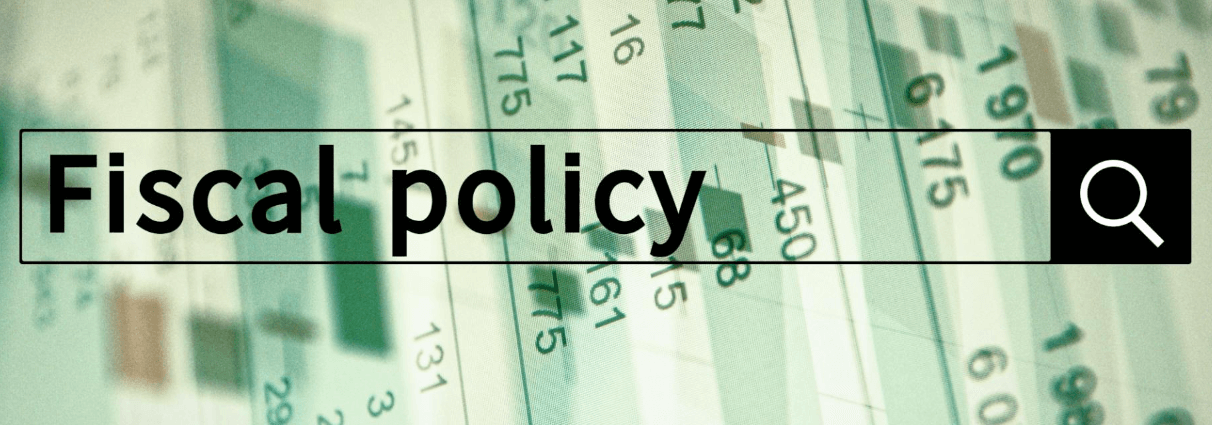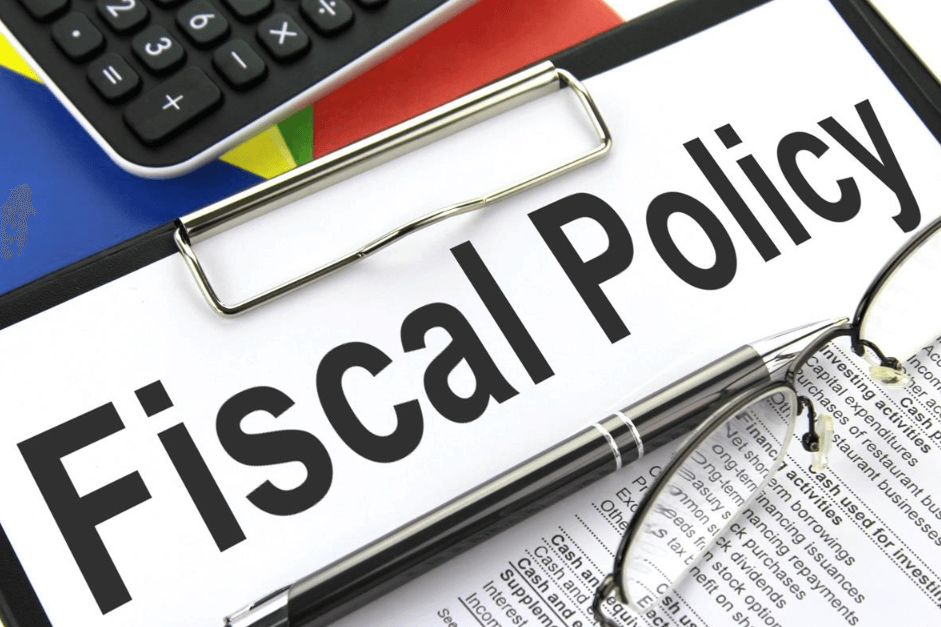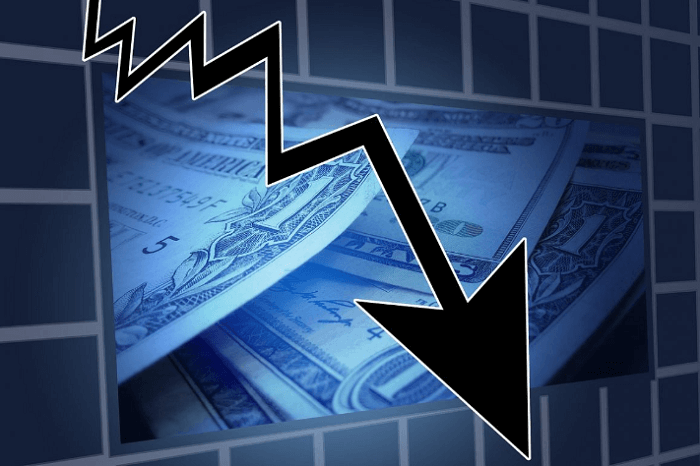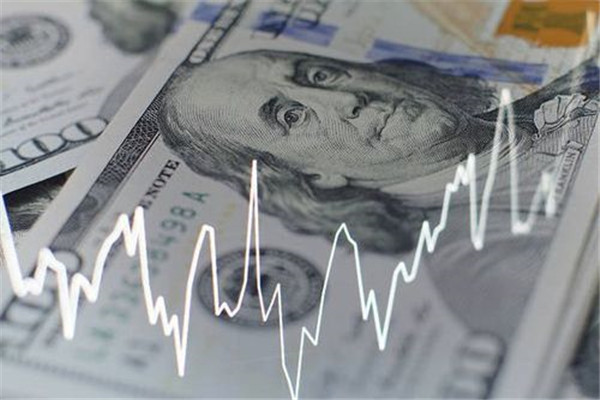In the investment market, the main point is to ride a big trend. This means that investors need to find the real general trend of the market and then determine their investment strategy based on this trend. Do not go against the general trend, so it is easy to make money. And to seize the investment market trend, two macroeconomic regulatory instruments must be understood. Now let's take a detailed look at one of them: the concept of fiscal policy explained. I hope to be able to provide a little help.
 What is fiscal policy?
What is fiscal policy?
Fiscal policy refers to government changes in taxes and expenditures in order to affect aggregate demand and thus affect employment and national income policy. This means that the state regulates fiscal revenues and expenditures in order to achieve a balance between supply and demand in society and to prevent inflation or deflation. Its objectives usually include realizing full employment, controlling inflation, promoting economic growth, and adjusting income distribution.
Simply put, it is to promote economic growth and create employment opportunities to achieve maximum employment. And to control inflation through fiscal means in order to maintain price stability. Then promote long-term economic growth by increasing public investment and supporting private sector investment. Together with tax and expenditure policies, the distribution of wealth and income is adjusted to improve social equity.
Economics originated from the home economics of ancient Greece, where housewives did their family's income and expenditure plans in this way, selling the pigs they kept at home, adding a few clay pots, and selling the statues ushered in by the Olympics to pay off debts. Family and country are reasons why a country's income and expenditure plan is fiscal policy.
In the 1930s, an economic crisis swept through the western world like a plague. Canthism was born in response to the situation and was seen as a cure for the economic crisis. Canthism believes that government spending can be increased during an economic depression to stimulate national economic development. When the economy was overheated, government spending could be cut to curb inflation and cool down the economy. Thus, the state began to use it to intervene in the national economy.
It mainly consists of two parts: income and expenditure. The money earned by the government comes from taxes, and the money spent by the government is mainly used to buy goods and services. Expenses and profits bring in much less income than taxes and national debt. So the country's income is actually still mainly the two parts of taxes and issuing national debt.
Revenues mainly include taxes, profits, public debt, and fees. Among them, tax is well understood; that is, we usually pay a variety of taxes, such as personal income tax, value-added tax, and so on. Profit refers to the profit that the state obtains by virtue of the ownership of state-owned assets, such as dividends and bonuses from state-owned enterprises.
Public debt is national and local debt. In addition to the national bonds issued by the government, the local government's debts are also included, such as the Shandong government's bonds, the Shanxi government's bonds, and so on. Finally, expenses refer to the fees charged by the government or institutions for providing public services, for example, highway tolls.
State financial expenditure is divided into two categories: one is government purchases and the other is government transfers. Government purchases are tangible or intangible products purchased by the government, such as office supplies for government departments, weapons for the military, and labor costs for civil servants, all of which are considered government purchases. Government transfers refer to a variety of welfare expenditures, such as social assistance payments and subsidies for the elderly.
In the process of policy formulation, the government diagnoses the national economy with reference to a variety of macroeconomic indicators, such as GDP and CPI. And it regulates social demand through tools such as national debt and government investment to make the national economy develop healthily. From this, it can be categorized into expansionary, tightening, and neutral.
In times of economic downturn, the government will raise debt to survive and implement expansionary fiscal policies. National bonds are issued to build infrastructure and promote employment to boost economic growth. When the economy is overheating, the government tightens its belt and adopts austerity-type policies. Government spending is cut to contract economic development. When economic development is stable, the government keEPS expenditures within the limits of revenues to make a neutral policy of balancing revenues and expenditures, which has a neutral impact on aggregate social demand.
Fiscal policy is the country's major policy, and together with monetary policy, it constitutes the two main tools of macroeconomic management in the coordinated operation of the common influence on the development and stability of the economy. Only by grasping the big picture can investors strategize and be successful in the financial market.
Difference between fiscal and monetary policy
| Aspect |
Fiscal policy |
Monetary Policy |
| Objectives |
Influences growth, employment, inflation. |
Regulates economy with rates, supply. |
| Implementing Organizations |
Government-managed by Finance Ministry. |
central banks, like Federal Reserve. |
| Tools |
Government finances: spending, taxation. |
Money supply, rates, lending policies. |
| Time effect |
Infrastructure projects take time for impact. |
Swift interest rate implementation. |
| Flexibility |
Government processes are slow. |
Central banks adjust policy swiftly. |
| Speed of policy adjustment |
Slow decisions impede policy adjustments. |
Central banks swiftly adjust rates. |
Expansionary and tightening fiscal policies
In the process of policy making, the government will utilize tools such as taxes, Treasury bonds, fiscal investment, fiscal subsidies, and other tools to conduct expansionary, tight, or neutral fiscal policies based on macro data such as GDP and CPI.
Because its main purpose is to regulate the government's income and expenditure to balance social supply and demand, For example, when the economy is overheated by inflation, there is too much money in the market, so a tight fiscal policy is implemented to make the money in the market less in order to achieve the balance of supply and demand. On the contrary, when deflation occurs, expansionary fiscal policies are used to achieve equilibrium; that is, not too much, not too little, is a neutral policy.
Expansionary fiscal policy is a macroeconomic policy that stimulates aggregate demand, promotes economic growth, and raises employment levels by increasing government spending or reducing taxes. This policy is usually used during a recession or downturn to counteract negative economic shocks. Primarily, it stimulates consumption and investment by increasing government spending or reducing the tax burden in order to induce stronger overall economic activity.
The key is to increase government spending, which means that the government is required to boost economic activity by increasing spending in areas such as infrastructure, education, and health care. This could include investment in infrastructure projects, higher social welfare spending, or other forms of public spending. Alternatively, it could increase disposable income for individuals and businesses by reducing taxes.
Both increased government spending and reduced taxes will encourage individual consumption and business investment, thereby increasing aggregate demand. The increase in aggregate demand will then stimulate production and employment. Increased government spending usually leads to the expansion of related industries, thus creating more jobs.
Such policies are mainly used to counteract periods of recession or downturn. During these periods, the private sector may reduce investment and consumption, leading to a fall in aggregate demand. Since the government always fills this gap by increasing its spending, the implementation of such policies generally leads to fiscal deficits as the government spends more than it receives in tax revenues. A fiscal deficit is essentially the government borrowing to finance its expenditures.
It is usually seen as a short-term response because, in the long run, fiscal deficits can lead to debt accumulation and potential economic problems. So the response to it needs to weigh adjustments in government spending and taxation to ensure a positive impact on the economy. Such policies also need to take into account macroeconomic factors such as inflation and debt levels.
Austerity fiscal policy is a macroeconomic policy that suppresses aggregate demand by reducing government spending or increasing taxes to avoid overheating the economy, control inflation, or solve fiscal problems. This type of policy is usually used during periods of high economic growth to prevent excessive inflation and economic imbalances or to correct fiscal deficits.
Its key point is to reduce government spending, which means that the government reduces aggregate demand by cutting back on spending in areas such as infrastructure, social programs, and education. This can include canceling or postponing originally planned public programs, cutting spending in government departments, etc. Alternatively, taxes can be increased to reduce the disposable income of individuals and businesses. This helps to reduce consumption and investment by individuals and businesses, thus suppressing aggregate demand.
Its main purpose is to control inflation. By curbing excessive aggregate demand, the government can avoid overheating the economy and prevent inflation from increasing further. This may lead to a fiscal surplus, as the government's tax revenues may exceed its expenditures.
Fiscal surpluses help to pay down fiscal deficits and reduce debt, so they are often seen as a long-term economic stabilization tool designed to ensure that inflation and economic activity remain at sustainable levels. However, it can also consequently lead to a slowdown in economic growth or even trigger a recession. This may have a negative impact on employment and social welfare, and thus the government needs to weigh this when implementing it.
In choosing between expansionary or tightening fiscal-type policies, governments need to consider the current economic situation, macroeconomic objectives, and possible long-term impacts. Usually, these two policies are also complemented with monetary policy to achieve comprehensive macroeconomic regulation.
 What are the main instruments of fiscal policy?
What are the main instruments of fiscal policy?
Generally speaking, its main instruments are taxes, national debt, fiscal investment, and fiscal subsidies. Among them, tax and national debt are the revenue parts of the fiscal policy, and investment and subsidies are the fiscal expenditures. So in general, it is still the use of revenue and expenditure to regulate the economy.
Taxes are adjusted in two ways: one to reduce and the other to increase. When the economy is in the doldrums, taxes can be reduced, including personal income tax, corporate income tax, and consumption tax. This will increase the disposable income of individuals and enterprises and promote consumption and investment. On the contrary, revenues have to be raised when there is inflation, so that there is less money circulating in the market. At this point, tax rates have to be raised, which discourages excessive consumption and investment.
Treasury bonds are a bit more complicated and have to be divided into situations. There are two kinds of national debt issuance: one is for investment, and the other is to collect money. If the issuance of national debt is used for investment, such as repairing bridges and roads, which will inevitably drive the relevant industry chain and reduce unemployment, This is tantamount to putting money on the market, so this situation requires less issuance of Treasury bonds.
The second situation is not used to issue bonds for consumption, but to feel that the market has more money to recover. This requires finding a way to collect the money, i.e., to pay the national debt. Because the national debt liquidity is far less than cash, it achieves the effect of recovering money. And for this purpose of the national debt, we generally need to issue more.
Fiscal investment refers to the government's investment of funds in various fields for infrastructure construction, public works, social programs, etc., in order to promote economic growth and improve public services. The aim is to stimulate economic activity, increase employment levels, and improve social welfare through increased government spending.
Fiscal investment is seen as an effective economic stimulus that can provide support in times of economic downturn. It boosts overall demand by increasing spending, prompting businesses and individuals to increase investment and consumption. It generally involves infrastructure areas such as roads, bridges, transportation systems, energy facilities, and water projects. These projects help to enhance the country's productive capacity and competitiveness, as well as improve the level of public services, including education, healthcare, social welfare, and so on.
Since the implementation of financial investment projects usually requires labor, this helps create jobs and alleviate the unemployment problem. And the benefits are usually long-term, as the upgrading of infrastructure and public services has a lasting impact on the economy.
However, because fiscal investments may lead to an increase in government deficits and debt, the government needs to borrow to support these projects. Therefore, there is a need to weigh the long-term benefits of the investment against its fiscal sustainability. The success of fiscal investment depends on the government's choice of projects, efficiency of implementation, and ability to adapt to the economic environment.
Fiscal subsidies are financial assistance provided by the government to support specific industries, enterprises, individuals, or specific activities. This assistance is usually in the form of a financial contribution, involving direct payments or tax relief, among other things. Its objectives include promoting economic growth, supporting key industries, stimulating employment, and improving the accessibility of specific products or services.
Governments can support strategic or key industries by providing subsidies to promote their development and competitiveness, including in the areas of manufacturing, agriculture, science, and technology. Fiscal subsidies are also used to encourage enterprises to undertake research and development (R&D) activities and to promote scientific and technological innovation.
Fiscal subsidies may also be used to improve accessibility to public services, such as health care, education, housing, etc., which will improve the level of social welfare. They are also sometimes used to reduce social inequality by providing benefits or subsidies to low-income households. A common form of subsidy is to reduce the financial burden on firms or individuals by reducing or deferring taxes in order to promote investment and consumption.
During economic downturns, governments may stimulate job growth by giving subsidies to employers or businesses. And to help individuals or businesses cope with economic difficulties under special circumstances, such as the occurrence of natural disasters or global crises, It is also used to encourage environmental protection and sustainable development practices, such as renewable energy programs, energy efficiency improvements, etc.
The use of financial subsidies requires governments to weigh economic, social, and fiscal factors to ensure that their objectives are met and to guard against potential abuse or financial instability. In general, during inflationary times when the economy is already overheating, less investment is needed. The same is true for subsidies; as little money as possible is put into the market, so there are also fewer fiscal subsidies.
What are the tools of fiscal policy
| Instruments |
Description |
| Government Expenditures |
Adjusting spending on infrastructure and education. |
| Tax policy |
Change tax rates for income and consumption. |
| Fiscal deficits |
Borrow to cover government spending when taxes fall short. |
| Debt management |
The government manages debt and raises funds through treasury bonds. |
| Employment guarantee programs |
Provide jobs directly and create jobs through public works and projects. |
| Subsidies |
Provide direct financial assistance to specific industries, firms, or individuals. |
| Social Welfare Expenditures |
Boost investment in education, healthcare, and social security. |
| Tax relief |
Stimulate economic activity by reducing specific tax burdens. |
| Capital support |
Encourage investment through subsidies or financial aid to businesses. |
| Local Government Support |
Offer financial aid to local governments for economic development. |
Disclaimer: This material is for general information purposes only and is not intended as (and should not be considered to be) financial, investment, or other advice on which reliance should be placed. No opinion given in the material constitutes a recommendation by EBC or the author that any particular investment, security, transaction, or investment strategy is suitable for any specific person.



 What is fiscal policy?
What is fiscal policy?
 What are the main instruments of fiscal policy?
What are the main instruments of fiscal policy?























